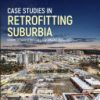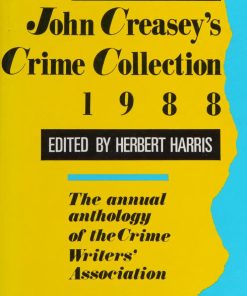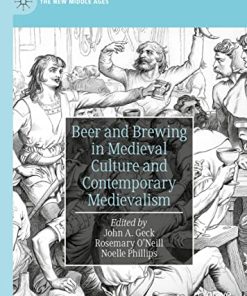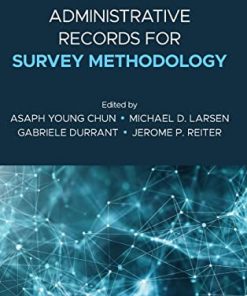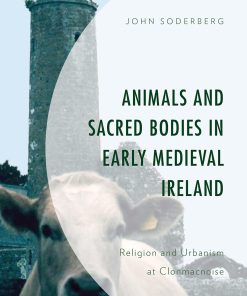Eckweek, Peasedown-St-John, Somerset : Survey and Excavations at a Shrunken Medieval Hamlet 1988-1990 Andrew Young
$50.00 Original price was: $50.00.$25.00Current price is: $25.00.
Eckweek, Peasedown-St-John, Somerset : Survey and Excavations at a Shrunken Medieval Hamlet 1988-1990 – Ebook Instant Download/Delivery ISBN(s): 9781003016526,1003016529
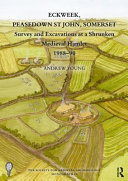
Product details:
- ISBN-10 : 0367860317
- ISBN-13 : 978-0367860318
- Author(s): Andrew Young
This volume presents the results of archaeological survey and excavation at Eckweek, Somerset, which yielded one of the most important medieval rural settlement sequences yet excavated from south-west England.
At the centre of the narrative is a succession of well-preserved buildings spanning the late 10th to the 14th centuries A.D. forming the nucleus of a Domesday manor and its Late Saxon precursor. Detailed analysis of the structural sequence offers a new regional perspective on pre-Conquest earthfast timber architecture and its subsequent (12th-century) replacement by masonry traditions. Culminating in a richly preserved 14th-century farmhouse, including a very complete assemblage of structural and domestic objects, the structural archaeology provides an unusually refined picture of the internal organisation of later medieval domestic space within a rural farming setting. Detailed analytical attention is given to the abundant artefactual and environmental datasets recovered from the excavations (including prolific assemblages of medieval pottery and palaeonvironmental data) with a nuanced appraisal of their interpretative implications.
Table contents:
1 Introduction
1.1 Background to the project
1.2 Geology, topography and landuse
2 Documentary and Archaeological
Background
2.1 Documentary, archaeological and landscape
evidence (by Dr Nick Corcos, 2013)
2.2 The placename Eckweek (by Dr Michael
Costen)
2.3 Eckweek in Domesday Book (by Dr Frank
Thorn)
3 Surveys
3.1 Preliminary surveys
3.2 Geophysical survey (by Andrew Payne of
Historic England, 1989, updated 2015)
4 Excavations
4.1 Excavation areas and methodologies
4.2 Summary of structural phasing
4.3 The excavated evidence
4.4 Watching brief
5 Artefacts and Environmental Evidence
5.1 Prehistoric ceramics – pottery, briquetage
and a bronze-working crucible (by Dr Elaine
Morris, 1992, updated 2015)
5.2 Romano-British pottery (by Dr Jane Timby,
2015)
5.3 The late Saxon, Saxo-Norman, medieval and
post-medieval pottery (by Andrew Young and
Alexander Kidd, 1990–1991, updated 2015)
5.3.1 The petrology of medieval pottery (by
D F Williams PhD FSA – Department of
Archaeology, University of Southampton, 1991)
5.4 Coins (by Sarah Newns, 2015)
5.5 Iron and lead objects (by Ann Thompson,
1991)
5.6 Copper alloy objects (by Sarah Newns, 2015)
5.7 Flint (by Vince Russett, 1991)
5.8 Worked stone objects (by Alexander Kidd
and Andrew Young, 1991)
5.8.1 The petrology of medieval whetstones of sandstone
from Eckweek (by Professor Gilbert Kelling –
Department of Geology, University of Keele, 1991)
5.9 Clay tobacco pipe (by Sarah Newns, 2014)
5.10 The composition of a group of later medieval
copper alloy ‘ingots’ and other objects (by
Nigel Blades, 1991)
5.11 Worked bone objects (by Sarah Newns, 2015)
5.12 The jet bead SF627 (by Sarah Newns, 2015)
5.13 Faunal remains (by Dr Simon Davis, 1992,
updated 2015)
5.14 Charred plant remains (by Wendy
Carruthers, 1995, updated 2015)
5.15 Molluscs (by Dr Matt Law, 2014)
6 Independent Dating
6.1 Radiocarbon dating (Queens University
Belfast, 1991, reviewed and updated by
Dr Peter Marshall, 2015)
6.2 Comment on the 1991 radiocarbon dates (by
Andrew Young, 1991, revised 2015)
7 Reconstructing Late Saxon and Medieval
Eckweek (2015)
7.1 The medieval buildings and structures
7.2 Artefacts: the character and distribution of
Late Saxon and medieval finds
7.3 Artefactual evidence for settlement
development – continuity and change
7.4 Artefacts and ecofacts – general conclusions
7.5 The agricultural and domestic economy
People also search:
peasedown st john walks
peasedown st john somerset
peasedown st john
peasedown st john population
peasedown st john facebook
peasedown st john forum
You may also like…
Romance - Romantic Comedy
Rival Hearts 1st edition by Brenda John Brown 979-8575019169
Romance - Contemporary Romance
Bride and Tested 1st edition by Brenda St John Brown B09Q6L97CG
Politics & Philosophy - Social Sciences
History - European History
Uncategorized
Romance - Contemporary Romance


